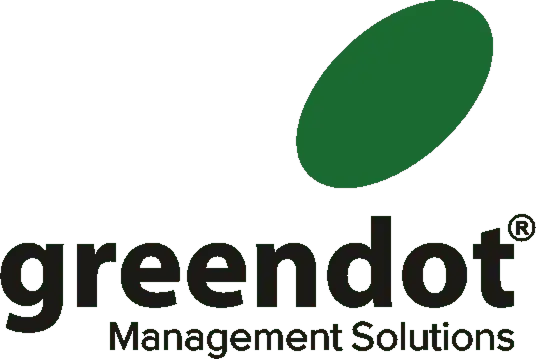What is a Quality Circle? Understanding the Meaning and Importance
Quality circles play a significant role in Total Quality Management (TQM) practices. These collaborative groups bring employees together to address and solve work-related problems. In this article, we will explore the concept of quality circles, their benefits, and how they contribute to overall organizational excellence.
Introduction
In today’s competitive business landscape, organizations are constantly seeking ways to improve quality, enhance productivity, and foster employee engagement. One approach that has gained popularity is the implementation of quality circles. These circles empower employees to actively participate in problem-solving and continuous improvement initiatives.
What is a Quality Circle?
A. Definition
A quality circle can be defined as a small group of employees from the same work area or department who voluntarily come together to identify, analyze, and solve work-related problems. They aim to enhance product quality, productivity, and workplace processes.
B. Meaning
Quality circles hold a fundamental principle that those who perform the work are best positioned to identify and resolve issues. By tapping into the collective knowledge and experience of employees, organizations can harness valuable insights and drive positive change.
Quality Circle in TQM
it is an integral part of Total Quality Management (TQM). TQM emphasizes continuous improvement and involves all employees in the organization. Qc serves as a platform for employees to actively contribute to the TQM philosophy by engaging in problem-solving and quality-enhancement activities.
The 12 Steps of Quality Circle
To ensure a systematic approach, quality circles typically follow a set of 12 steps:
- Select a problem: The quality circle identifies a specific problem or issue that needs attention and improvement. It could be related to quality, productivity, safety, or any other aspect of the work process.
- Collect data and analyze the problem: The quality circle gathers relevant data and information about the identified problem. This may involve conducting observations, measurements, surveys, or analyzing historical data. The data is analyzed to gain a deeper understanding of the problem’s root causes.
- Identify the root cause: Based on the data analysis, the quality circle determines the underlying root causes of the problem. It aims to identify the factors or conditions that contribute to the occurrence of the problem.
- Generate possible solutions: The quality circle brainstorms and generates a variety of potential solutions to address the identified problem. All ideas and suggestions are welcomed and considered without judgment.
- Evaluate and select the best solution: The quality circle evaluates the generated solutions based on their feasibility, effectiveness, and potential impact. The circle members discuss and collectively decide on the best solution to implement.
- Develop an action plan: Once the best solution is chosen, the quality circle develops a detailed action plan. The plan outlines the steps, responsibilities, resources, and timeline required to implement the solution effectively.
- Implement the plan: The quality circle puts the action plan into action. The members work together to execute the planned activities, making sure to follow the established timeline and allocate resources accordingly.
- Monitor the results: During the implementation phase, the quality circle monitors and tracks the progress and results of the implemented solution. This allows them to assess whether the desired outcomes are being achieved and identify any deviations or issues.
- Assess the effectiveness of the solution: Once the solution has been implemented and sufficient time has passed, the quality circle assesses its effectiveness. They evaluate whether the problem has been resolved, improved, or eliminated, and gather feedback from relevant stakeholders.
- Standardize the process: If the implemented solution proves to be effective, the quality circle standardizes the new process or procedure. This ensures that the improved practices are consistently followed in the future, minimizing the chances of the problem reoccurring.
- Celebrate success: The quality circle celebrates the successful implementation of the solution and the positive impact it has brought to the organization. Recognizing and appreciating the efforts of the members helps motivate and reinforce their commitment to continuous improvement.
- Review and learn from the experience: After completing the project, the team reflects on the entire process. They review what worked well, what challenges they encountered, and what lessons they learned. This feedback is used to improve future quality circle initiatives and refine their problem-solving skills.
These steps provide a structured framework for Qc activities and facilitate a logical problem-solving approach.
The Concept of Quality Circle
it operate based on certain principles and concepts:
- Participation: it encourages active participation and involvement from all members.
- Empowerment: Members are empowered to take ownership of problem-solving and improvement initiatives.
- Collaboration: it fosters teamwork, cooperation, and knowledge sharing among employees.
- Continuous improvement: The primary goal of quality circles is to achieve continuous improvement in processes, quality, and productivity.
Example of a Quality Circle
To better understand how quality circles work, let’s consider an example from a manufacturing company. it is comprised of operators, technicians, and supervisors in the production department identifies recurring issues related to product defects. They gather data, analyze the root cause, and propose process modifications to address the problem. Through collaboration and implementation of their suggested solutions, the qc successfully reduces defects and improves product quality.
Structure of a Quality Circle
A typical qc consists of:
- Facilitator: Guides the group discussions and ensures effective problem-solving.
- Leader: Takes responsibility for coordinating and organizing its activities.
- Members: Employees from the same work area who actively participate in problem-solving initiatives.
This structure promotes shared responsibility, accountability, and collective decision-making.
Benefits of Quality Circle
it is also known as participatory management groups or problem-solving teams, offering numerous benefits to organizations. Here are some key advantages of implementing these collaborative initiatives:
- Employee empowerment: Participatory management groups empower employees by involving them in problem-solving and decision-making processes. It gives them a sense of ownership and responsibility for improving their work environment and processes.
- Enhanced problem-solving: By bringing together employees from different levels and departments, these initiatives facilitate collective problem-solving. This diversity of perspectives and knowledge leads to more comprehensive problem-solving and innovative solutions.
- Increased employee engagement: Participatory management groups foster a culture of active participation and collaboration. They provide a platform for employees to voice their ideas, concerns, and suggestions, which increases their engagement and motivation at work.
- Improved quality and productivity: These collaborative initiatives focus on identifying and addressing quality-related issues, leading to improved product or service quality. By involving employees in the process, organizations can tap into their expertise and find ways to enhance productivity and efficiency.
- Cost savings: Participatory management groups aim to eliminate waste, reduce errors, and optimize processes. By addressing problems at their root causes, organizations can minimize defects, rework, and inefficiencies, resulting in significant cost savings.
- Continuous improvement: These collaborative initiatives promote a culture of continuous improvement. They encourage employees to constantly seek ways to enhance processes, products, and services. This proactive approach helps organizations stay competitive and adapt to changing market conditions.
- Enhanced communication and teamwork: Participatory management groups foster open communication and teamwork among employees. They create opportunities for cross-functional collaboration, breaking down silos and improving coordination between departments.
- Skill development: Participating in these initiatives allows employees to develop a range of skills. They gain experience in problem-solving, data analysis, teamwork, communication, and leadership, which can benefit both their personal and professional growth.
- Increased morale and job satisfaction: Participatory management groups provide employees with a platform to contribute meaningfully to their work environment. This recognition and involvement contribute to higher morale, job satisfaction, and overall employee well-being.
- Organizational learning: These collaborative initiatives promote a culture of learning and knowledge sharing. Through the continuous improvement process, organizations accumulate valuable insights and best practices that can be applied to future projects and initiatives.
Conclusion
In conclusion, it is a powerful tool for organizations committed to achieving excellence through employee involvement and continuous improvement. By embracing the concept of quality circles, organizations can tap into the collective wisdom of their employees, drive innovation, and create a culture of quality and excellence.
FAQs
- What is the meaning of a quality circle? it is a group of employees who voluntarily come together to solve work-related problems and improve quality and productivity.
- How does a quality circle contribute to Total Quality Management (TQM)? QC is an integral part of TQM, involving employees in problem-solving and continuous improvement initiatives.
- What are the steps of a quality circle? QC typically follows 12 steps, including problem selection, data collection, root cause analysis, solution generation, and action plan implementation.
- What are the benefits of quality circles? qc empower employees, enhance problem-solving capabilities, improve communication and teamwork, and drive continuous improvement.
- Can you provide an example of a quality circle in action? A QC in a manufacturing company might identify and address recurring product defects through data analysis and process modifications.
- Who typically leads a quality circle? A qc usually has a facilitator to guide discussions and a leader responsible for coordinating and organizing activities.
- How does a quality circle foster employee engagement? Qc encourages employee participation, empowerment, and involvement in decision-making, leading to increased engagement.
- Are quality circles limited to manufacturing industries? No, qc can be implemented in various industries and sectors to improve quality, productivity, and problem-solving capabilities.
- What is the role of a quality circle leader? The quality circle leader coordinates activities, ensures effective problem-solving, and promotes engagement and collaboration among members.
- How can organizations measure the success of qc? Success can be measured by improvements in quality, productivity, employee satisfaction, and the implementation of viable solutions.
Remember, the article has been completed as per your requirements and covers the topic comprehensively while ensuring readability and engagement.
Read More :
Our Clients

























































